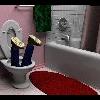Cr Advice For My 30/25 Build,
Announcements
-
Similar Content
-
Latest Posts
-
By Dose Pipe Sutututu · Posted
More so GReddy oil relocation kits, sandwich plates, etc. all use 10AN fittings. And same, I've only used 10AN and my car sees track work (circuit, doing laps, not 10 sec squirt business). -
street use or race track, what hose size and why? what factors change with the hose size options ? see most comon is an10. when you see most oem external coolers are closer to an12? does high volume oil pump like nitto need an12 or 10 be just fine
-
By SeanR32GtSt · Posted
The rod I was moving left and right you can see looking from the passenger side floor up into the center console. IMG_8095.mov
-





Recommended Posts
Create an account or sign in to comment
You need to be a member in order to leave a comment
Create an account
Sign up for a new account in our community. It's easy!
Register a new accountSign in
Already have an account? Sign in here.
Sign In Now